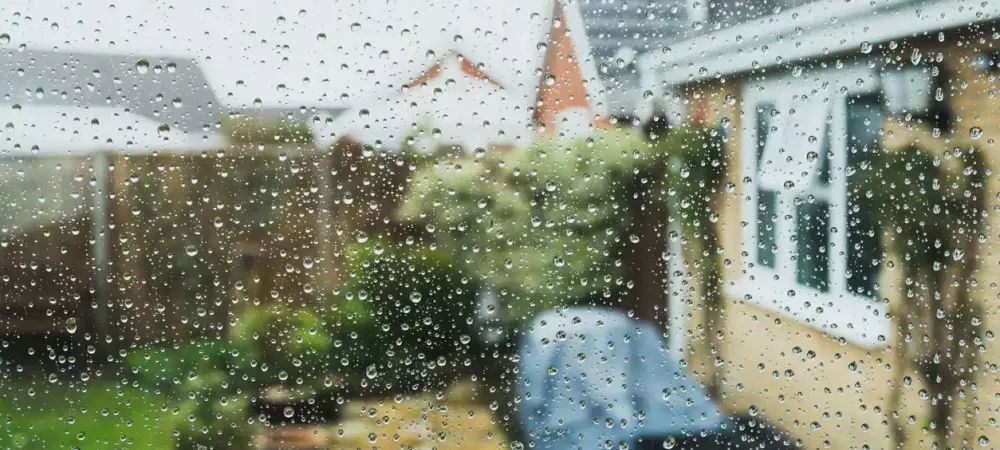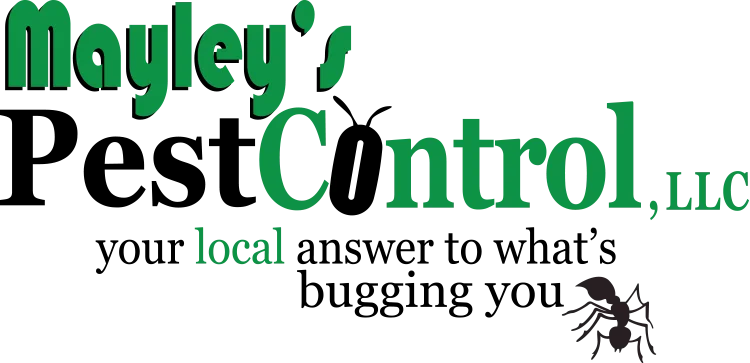
Gulf Coast Storm Recovery — How to Stop Pests Attracted to Moisture Before They Take Over
Post-storm moisture damage can attract dangerous pests within 24-48 hours through standing water, damaged roofing, and compromised structural barriers. The key is immediate moisture elimination before pest populations establish breeding sites. Most homeowners can handle basic water removal and temporary repairs themselves, but extensive structural damage or active infestations require professional intervention. This guide covers 5 proven methods to prevent pest takeover after Gulf Coast storms, including rapid moisture assessment, emergency pest barriers, and targeted elimination strategies, and when to call professional pest control for guaranteed protection that safeguards your family's health and property value.
Quick Start: Your 30-Minute Post-Storm Pest Prevention Assessment
Time is critical after Gulf Coast storms—moisture-seeking pests can establish colonies in your damaged property faster than most homeowners realize.
Call Professional Immediately If You See:
- Active termite swarms around damaged wood structures
- Mosquito breeding in standing water covering more than 100 square feet
- Fire ant mounds appearing within 24 hours near foundation damage
- Rodent droppings in areas with new water damage or structural openings
- Cockroach activity in kitchens or bathrooms with plumbing damage
Immediate Action Steps:
- Document all water damage and structural openings with photos for insurance and pest prevention
- Remove standing water from gutters, containers, and low-lying areas within 6 hours
- Seal obvious entry points with temporary materials like plastic sheeting and duct tape
- Establish ventilation in damp areas using fans or dehumidifiers if power is available
- Remove family and pets from areas with suspected pest activity or structural compromise
Key Assessment Points:
- Inspect foundation perimeter for new cracks or gaps where water pooled during the storm
- Check for moisture accumulation in crawl spaces, basements, or under damaged roofing
- Identify outdoor areas where debris created new water collection points attractive to pests
- Note timing of damage—48+ hours of moisture exposure significantly increases pest attraction risk
- Evaluate severity using the "24-48-72 rule": action within 24 hours prevents problems, 48 hours contains them, 72+ hours requires professional intervention
Complete Post-Storm Moisture Pest Control Guide
Effective storm recovery pest control requires systematic moisture elimination combined with strategic barrier creation to prevent pest establishment in your compromised property.
Step 1: Rapid Moisture Assessment and Emergency Elimination (2-4 hours)
Equipment/Materials Needed:
- Moisture meter or infrared thermometer to identify hidden water retention
- Wet/dry vacuum with extension hoses for confined space water removal
- Plastic sheeting and duct tape for temporary weather barriers
- Portable fans or dehumidifiers for immediate moisture reduction
- Camera for documentation and insurance claims
Detailed Process: Survey your property systematically, starting with areas where storm water entered and working outward to identify all moisture sources. Use the moisture meter to detect hidden water in walls, flooring, and structural elements that aren't visibly wet. Remove all standing water immediately, beginning with the largest accumulations and working toward smaller pools that create ideal pest breeding environments. Document everything with photos showing water levels, structural damage, and areas of concern for both insurance and future pest monitoring. Establish air circulation immediately in all affected areas, as stagnant, humid air accelerates pest attraction and mold growth that compounds pest problems.
Critical Indicators:
- Water standing for more than 6 hours creates immediate mosquito breeding risk
- Moisture readings above 20% in wood or drywall indicate professional assessment needed
- Sweet or musty odors suggest mold development that attracts specific pest species
Step 2: Emergency Pest Barrier Creation (3-5 hours)
Required Materials:
- Expanding foam sealant for quick crack and gap closure
- Hardware cloth or fine mesh screening for larger openings
- Weatherstripping and caulk for door and window sealing
- Plastic sheeting for temporary roof or siding protection
Application/Implementation Protocol: Seal all new structural openings created by storm damage, focusing first on ground-level entry points where water damage is most severe. Apply expanding foam to cracks in foundations, gaps around pipes, and areas where siding or roofing pulled away from the structure. Install temporary screening over larger openings like damaged vents or broken windows, ensuring fine enough mesh to exclude both flying and crawling pests. Address door and window sealing where storm damage compromised original weatherproofing, as these areas often combine moisture retention with easy pest access. Complete temporary weather protection for damaged roofing or siding to prevent continued water intrusion that sustains pest-attracting conditions.
Safety and Effectiveness Notes:
- Work only during daylight hours and avoid electrical hazards in water-damaged areas
- Monitor sealed areas for 24 hours to ensure foam expansion doesn't create new structural stress
- Maintain ventilation while sealing to prevent moisture trapping that worsens pest attraction
Step 3: Targeted Moisture Source Elimination and Monitoring (Ongoing: 1-2 weeks)
Monitoring Schedule:
- Immediate assessment: Every 6 hours for first 48 hours post-sealing
- Short-term monitoring: Daily checks for first week focusing on moisture levels and pest activity
- Long-term evaluation: Weekly assessment for 3-4 weeks until normal humidity levels restore
Success Metrics:
- Moisture levels dropping consistently with no new standing water appearing after rain
- Absence of pest activity in previously damaged areas within 72 hours of barrier installation
- Maintained structural integrity with no new cracks or openings developing from temporary repairs
- Prevention indicators showing no pest breeding sites or attractant conditions persisting
When to Escalate to Professional:
- Standing water reappears after 48 hours despite elimination efforts
- Pest activity increases rather than decreases within one week of barrier installation
- Structural damage proves too extensive for temporary DIY weatherproofing
- Moisture levels remain above 15% in structural materials after one week of mitigation efforts
DIY vs. Professional Post-Storm Pest Control
Understanding the scope and risks of post-storm pest prevention helps determine when professional intervention protects your investment most effectively.
DIY Approach Reality:
- Success Rate: 70% for minor water intrusion and surface moisture issues
- Time Commitment: 15-25 hours over the first two weeks for effective moisture elimination and monitoring
- Skill Requirements: Basic carpentry, ability to identify pest species, and moisture measurement capability
- Materials Needed: Moisture detection equipment, sealing materials, temporary weather barriers, documentation tools
- Best Suited For: Limited water damage, accessible repair areas, no active pest infestations, and structural integrity maintained
Professional Service Advantages:
- Success Rate: 95% with comprehensive treatment warranties and structural moisture guarantees
- Time Commitment: 2-4 hours of homeowner coordination with a professional handling all technical aspects
- Expertise Level: Licensed pest control certification, storm damage restoration experience, insurance claim support
- Equipment Access: Commercial moisture extraction, professional-grade sealants, integrated pest management systems
- Best Suited For: Extensive water damage, active pest infestations, structural repairs needed, insurance claim coordination required
Value and Risk Considerations: Professional intervention prevents long-term pest establishment that can cost thousands in ongoing treatments and structural damage. Post-storm conditions create unique risks where DIY mistakes often result in pest problems that persist for months or years.
Risk and Liability Factors: Professional services include insurance coverage for treatment effectiveness, documentation for insurance claims, and warranty protection against pest resurgence that DIY approaches cannot provide.
Gulf Coast-Specific Post-Storm Pest Considerations
Gulf Coast storm recovery requires understanding regional pest species and environmental factors that create unique challenges for effective moisture-based pest prevention.
Regional Factors:
- High humidity levels (often 80%+) extend moisture retention and pest attraction periods significantly beyond national averages
- Formosan termites and Burmese pythons represent invasive species that exploit storm damage more aggressively than native pests
- Hurricane season timing (June-November) coincides with peak pest breeding seasons, multiplying infestation risks
- Salt air corrosion accelerates structural deterioration, creating ongoing pest entry points beyond initial storm damage
- Frequent severe weather events require long-term pest prevention strategies rather than one-time treatments
Regulatory and Environmental Considerations:
- Coastal conservation regulations limit certain pest control methods near wetlands and waterways
- FEMA flood zone requirements affect structural repair approaches that impact pest prevention strategies
- Local vector control programs coordinate mosquito management during post-storm recovery periods
- Environmental protection mandates restrict pesticide applications in stormwater runoff areas
Regional Advantages and Challenges:
- Year-round growing seasons support continuous pest populations requiring ongoing management strategies
- Extended warm periods accelerate pest reproduction cycles during post-storm recovery
- Local extension office programs provide Gulf Coast-specific pest identification and management resources
Local Professional Advantage: Gulf Coast pest control professionals understand seasonal pest patterns, regional species behaviors, and storm-specific damage vulnerabilities that national companies often overlook in their treatment approaches.
Professional vs. DIY: When Expertise Protects Your Property Investment
Post-storm pest prevention decisions have a significant impact on both immediate recovery costs and long-term property protection, making the choice between DIY and professional intervention critical for Gulf Coast homeowners.
Homeowner-Appropriate Tasks:
- Basic water removal from accessible areas using standard wet/dry vacuum equipment
- Temporary sealing of obvious cracks and gaps with readily available hardware store materials
- Surface moisture monitoring using consumer-grade moisture meters in easily accessible locations
- Documentation of damage for insurance claims and pest prevention planning
- Initial debris removal from areas creating obvious water collection points
Professional Expertise Required:
- Structural moisture assessment in walls, subflooring, and concealed areas requires specialized equipment
- Treatment of active pest infestations using integrated pest management approaches and commercial-grade products
- Complex sealing and weatherproofing require construction knowledge and professional-grade materials
- Coordination with insurance adjusters and restoration contractors for comprehensive storm damage recovery
- Long-term pest prevention planning considering Gulf Coast-specific species and seasonal patterns
Value Protection Analysis:
- DIY Considerations: 25-40 hours of homeowner time over 4-6 weeks, with moderate success rates for minor damage
- Professional Benefits: Comprehensive treatment with warranties, insurance coordination, and expertise in regional pest species
- Long-term Investment: Professional pest prevention protects property values and prevents costly ongoing treatments
- Peace of Mind: Licensed expertise, insurance coverage, and treatment warranties protect against pest resurgence
Professional Service Advantages: Certified Gulf Coast pest control expertise, comprehensive storm damage treatment protocols, and guaranteed results with warranty protection ensure effective long-term pest prevention investment.
Call the Professionals at Mayley's Pest Control Before the Storm
The best defense against post-storm pest invasions is proactive protection before severe weather strikes. Regular pre-storm inspections identify vulnerable areas, seal potential entry points, and establish treatment barriers that prevent moisture-seeking pests from exploiting storm damage. Mayley's Pest Control's preventive maintenance programs include quarterly property assessments and seasonal pest treatments that protect your property when storms hit.
